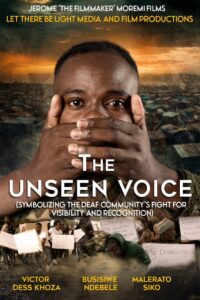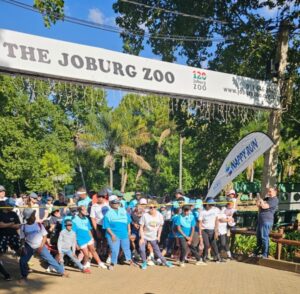
Khethiwe Nkuna on Neurodiversity, AI and Digital Transformation

By Khethiwe Nkuna
As AI reshapes every industry, neurodiversity isn’t just valuable—it’s essential for breakthrough innovation.
The world is in the middle of a seismic shift. Artificial intelligence (AI), machine learning, and digital transformation are rewriting the rules of work, communication, and society. Entire industries are being reshaped, from finance and healthcare to education and logistics. Organisations everywhere are asking the same question: how do we stay ahead of the curve?
The answer doesn’t lie in technology alone. It lies in people, in the diverse ways human beings think, imagine, and solve problems. One of the most under-tapped sources of innovation today is neurodiversity.
What Do We Mean by Neurodiversity?
Neurodiversity is the idea that neurological differences — such as autism, ADHD, dyslexia, dyspraxia, and others — are natural variations of the human brain. These differences come with distinct strengths, challenges, and ways of experiencing the world.
For too long, schools and workplaces have framed neurodivergence as a “deficit” that must be corrected. But a growing global movement, with strong roots in South Africa as well, is reframing neurodiversity as an asset — a source of creativity, insight, and resilience that our traditional systems often fail to recognise.
When we shift the narrative from “accommodation” to advantage, we begin to see neurodivergent talent for what it is: a critical driver of progress in an age defined by complexity.
Why Neurodiversity Matters in the Age of AI
AI is brilliant at automation. It can analyse vast datasets, generate human-like text, and process information faster than any human ever could. But AI is not good at everything.
It struggles with:
- Ethical decision-making
- Imagination and empathy
- Connecting unrelated ideas into something new
-
Challenging assumptions and breaking patterns
This is where neurodiverse thinkers shine. Their cognitive differences produce unique patterns of reasoning that machines cannot replicate.
- Autistic professionals may detect hidden anomalies in data that strengthen cybersecurity or prevent fraud.
- Dyslexic innovators often see connections and narratives that others miss, fuelling breakthroughs in design, communication, and systems thinking.
-
People with ADHD frequently bring creative risk-taking, adaptability, and entrepreneurial energy — skills needed in fast-moving industries.
As AI takes over predictable, rule-based tasks, it is the unpredictable brilliance of human diversity, especially neurodiversity — that drives innovation forward.
Examples of Neurodiversity in Action
Globally, leading firms are beginning to unlock this advantage:
- Microsoft’s Neurodiversity Hiring Programme has brought autistic software engineers and testers into their workforce, improving both product quality and customer experience.
- SAP’s Autism at Work initiative has shown measurable productivity gains and stronger problem-solving on complex projects.
-
EY’s Neurodiversity Centres of Excellence are harnessing autistic and ADHD talent in cybersecurity, data analytics, and AI projects.
These aren’t charity initiatives. They are business strategies — and they work. Teams become more innovative, more resilient, and better equipped to tackle complex challenges.
Here in South Africa, where unemployment is high and digital skills shortages are urgent, embracing neurodiverse talent is not only an inclusion imperative, it is an economic opportunity.
The Missed Opportunity
Despite the progress, many South African workplaces still undervalue or exclude neurodiverse talent.
Recruitment processes often screen candidates out for not “fitting in” during conventional interviews. Office cultures frequently confuse “professionalism” with sameness. Too many leaders still prioritise conformity over originality.
The result? Countless neurodivergent innovators remain unemployed or underemployed — even as organisations lament skills shortages in digital, tech, and innovation spaces.
It is a painful irony: in an era where we need unconventional problem-solvers more than ever, we continue to shut the door on those who think differently.
Building Neuroinclusive Workplaces in the Digital Age
To fully harness neurodiversity, organisations must move beyond surface-level gestures and redesign systems to be more accessible and flexible. That means:
- Rethinking hiring: Replace rigid interviews with practical assessments or project-based trials.
- Redesigning workplaces: Provide quiet rooms, flexible schedules, and remote or hybrid options that support productivity.
- Leveraging technology: Use AI-enabled tools, captioning, transcription, and assistive tech to create a level playing field.
-
Training leaders: Shift leadership mindsets so that difference is seen as strength, not a problem to “manage.”
This isn’t about lowering standards. It’s about recognising that different ways of thinking deliver different types of value.
The Future of Innovation is Neurodiverse
Innovation thrives on difference. Homogeneous teams often fall into groupthink; diverse teams spark new ideas. Neurodiversity, in particular, provides the raw material for innovation:
- Fresh connections and associations others don’t see
- Solutions born from lived experiences outside the “norm”
-
Persistence and resilience in tackling complex challenges
As AI and digital transformation continue to accelerate, the organisations that thrive will be those that embrace neurodiverse talent. They will not only keep pace with disruption but actively shape the future.
A Call to Action
Neurodiversity is not simply about inclusion. It is about South Africa’s competitiveness in the digital economy.
The future will belong to organisations that:
- Build teams with the widest range of thinking styles
- Recognise that difference drives progress
-
Understand that while AI is powerful, the human brain — in all its diverse forms — remains the ultimate source of imagination
If innovation is the currency of the digital age, then neurodiversity is one of its richest yet most undervalued reserves. It’s time we invested in it fully.






